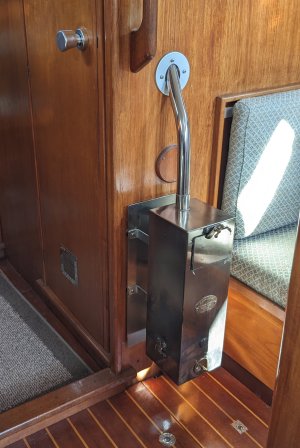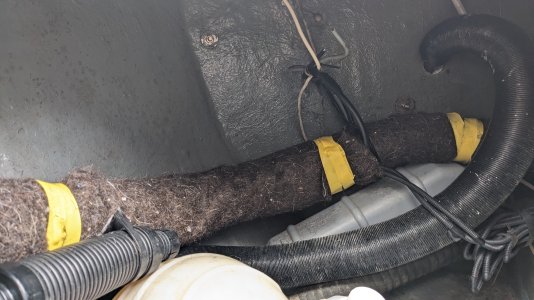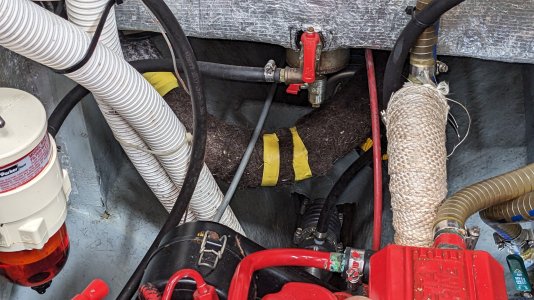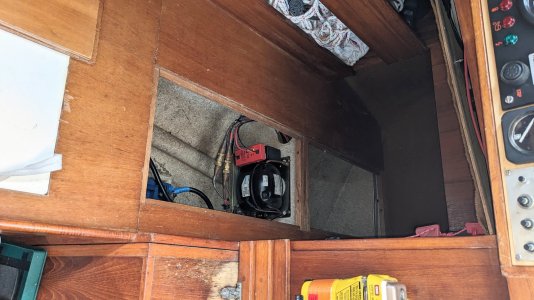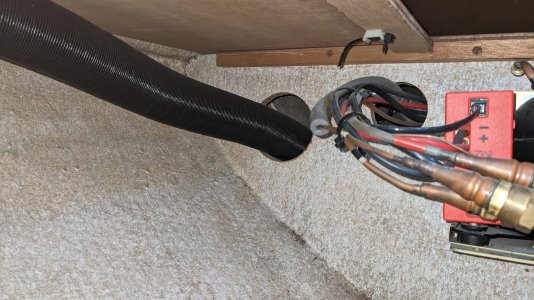PaulRainbow
Well-Known Member
You'll lose up to 40% of the heat if the ducting isn;t insulated. But, i wouldn't insulated the first 2 or 3 feet, as it gets really hot and can cause the heater to shut down.The ducting hasn't worked loose from the heater, and there is no evidence of smoke in the exhaust fumes out the stern or fuel starvation, but there are indeed several meters of uninsulated ducting in the cockpit-locker / engine-bay space before it enters the cabin space. This ducting feels pretty hot for the first meter or so that is easily accessible, but by the time the air exits the two vents in the cabin it has obviously lost a huge amount of energy! The colder it is (i.e. at night and with the engine-bay no longer warm from a good engine run) the more heat will be sucked from the ducting before it gets to where I need it.
Possibly caused by the heater running hot and the overheat sensor limiting output.There is a third element that may be involved? After some time running (half an hour to an hour, maybe just fifteen minutes) the controller seems to run the heater cool for a while (i.e. a ventilation cycle, just like when cooling down to stop), or reduces the fan speed... then the heat comes back on...? I have no idea why all this is.
An ON/Off switch would make no sense at all, it would just run flat out all of the time. Which controller do you have ? There is a very basic rotary controller, with just on/off nad heat settings.Also I hate this controller (and its illogical and incomplete rubbish manual). I just wish Owen had fitted a basic ON/OFF switch with no thermostat - that is all anyone ever really needs out of these heaters on small or medium sized boats: ON for heat, OFF for no heat!

